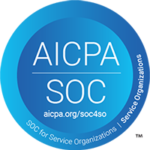
We know that more than half of Americans take at least one prescription drug, and that one in four Americans struggles to afford it. Studies repeatedly show that 20 percent to 30 percent of prescriptions are never filled due to cost, and that medications for chronic disease are not taken as prescribed about half the time.
Another oft-cited number: nonadherence to prescribed medicines costs the healthcare system about $300 billion annually. Updated analysis indicates the true cost is closer to $600 billion.
This New York Times piece is a year old, but it has stuck with me. Seven stories of America’s pharmacy system failing people. Seven patients whose health and/or finances are suffering unnecessarily due to the cost of their medications. Seven examples of the “one-in-four.”
What happens to them? We never know. It would be great if the Times wrote a follow-up to the story. However, we have a lot of one-in-fours among our 4 million-plus members. Or, should we say, former one-in-fours thanks to Rx Savings Solutions.
A few of our countless examples:
• A member with diabetes had been taking Januvia for years but stopped in early 2017 due to a steep price increase. She tried to resume her regimen in August 2018 hoping the price dropped. Instead, her cost for Januvia went up. We sent her a letter in the mail informing her of a savings opportunity, $130 per fill, with a therapeutic equivalent. Thanks to the $1,560 annual savings over Januvia, she’s able to manage her diabetes again instead of letting it deteriorate.
• A member on dialysis had two medications to help him manage chronic kidney disease. Throughout 2017 and 2018, his daily meds didn’t cost him a dime. In January, one of his prescriptions shot up to $300 per month due to a new, preferred pharmacy arrangement in his plan. He and his nurse case worker reached out to us. We got his prescriptions transferred to a pharmacy with a better price, reducing his cost down to $5.
• A member managing multiple conditions (high blood pressure, high cholesterol, depression, arthritis) had made major moves to improve his health. He sought treatment for alcohol dependency and entered a tobacco cessation program. Unfortunately, his cholesterol medication suddenly went from $0 to $185. With no money left in his budget, he stopped filling it. Sixth months later, a Savings Alert hit his dashboard showing a $142 savings on the same drug at a different pharmacy. He logged in to Rx Savings Solution and saw the alert but took no action. That triggered a phone call from our Pharmacy Support team. We transferred his prescription for him, and he resumed important cholesterol therapy for $42.57 per fill.
You’ll hear more extreme stories in the media and from politicians. They do a good job of illustrating the real-life consequences of high drug prices, especially for patients with chronic conditions. The stories generate sympathy, empathy and anger. But we’re still waiting for any meaningful change, or at least some action.
Our member stories show what’s possible and what success looks like for the one-in-four. To help solve the underlying problem of high drug prices, however, the other three need to pay less for prescriptions as well. We have plenty of their stories, too.



